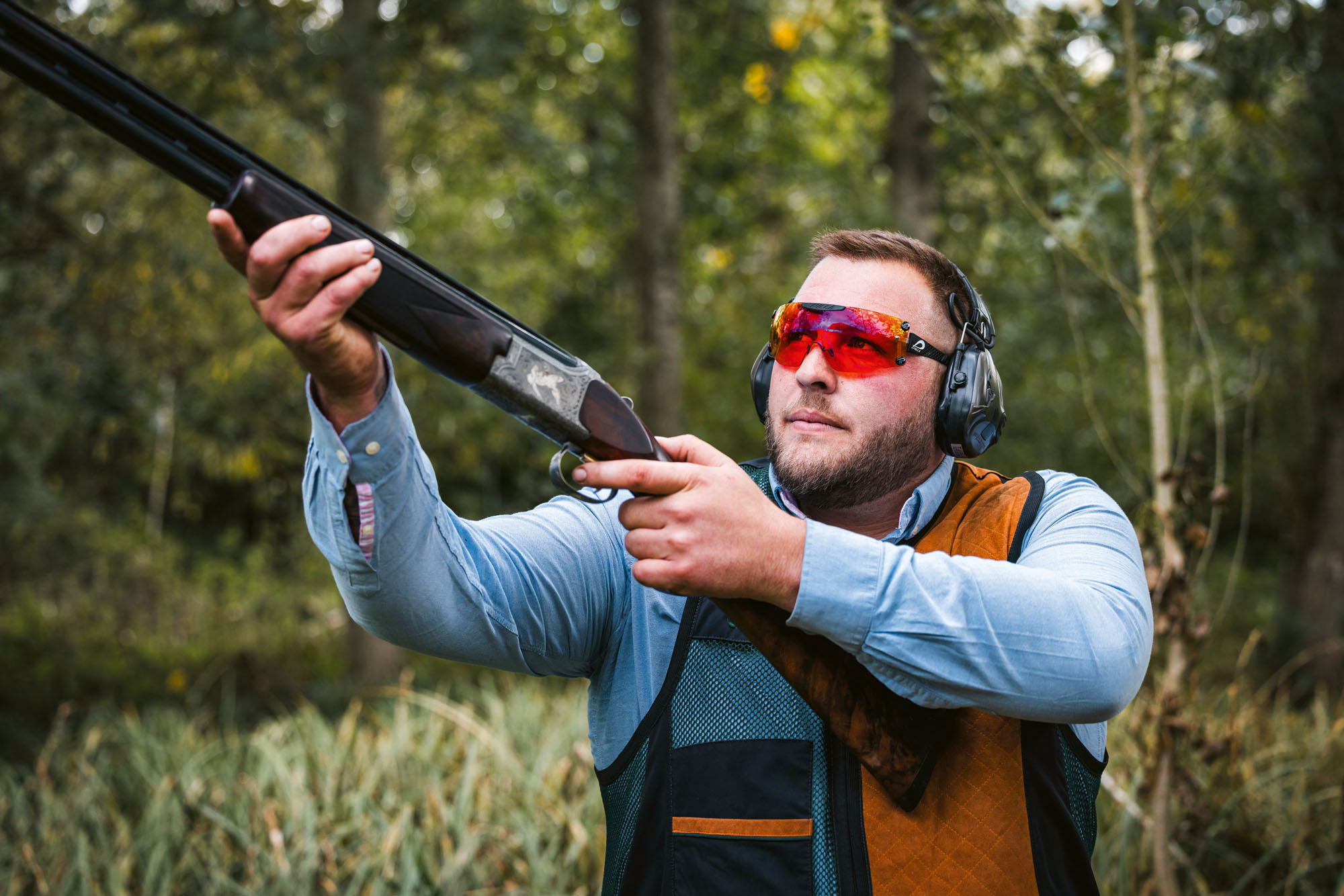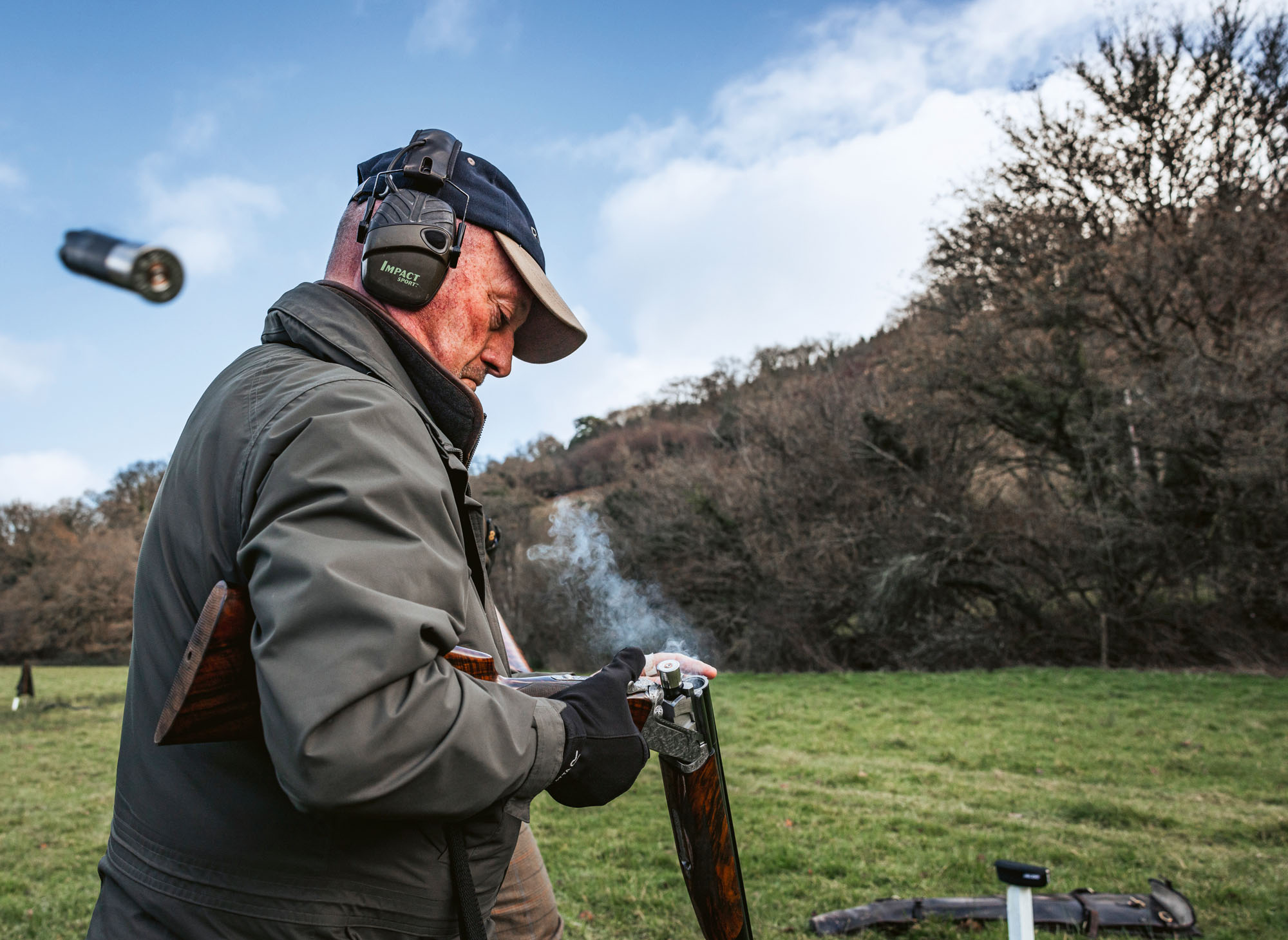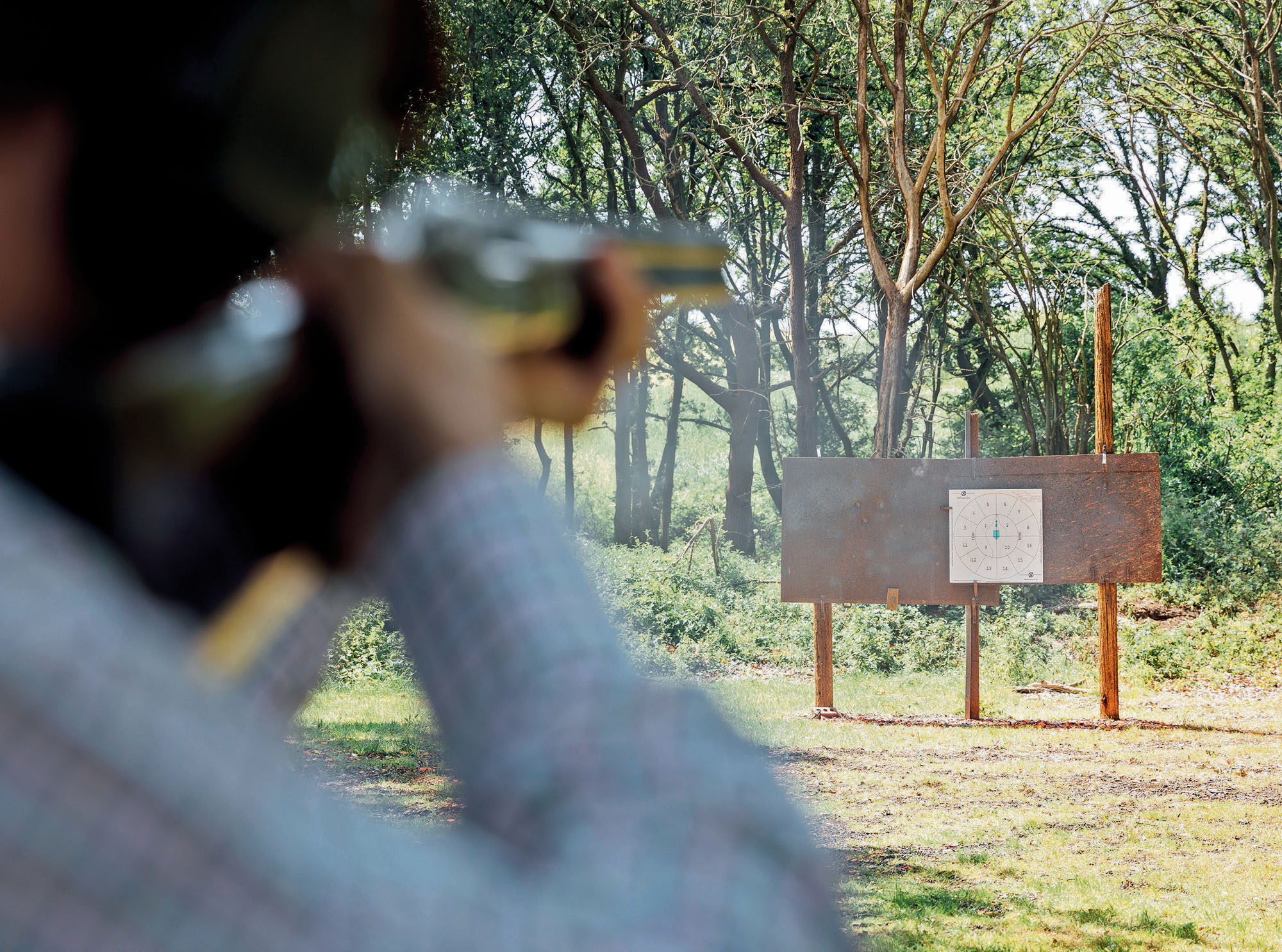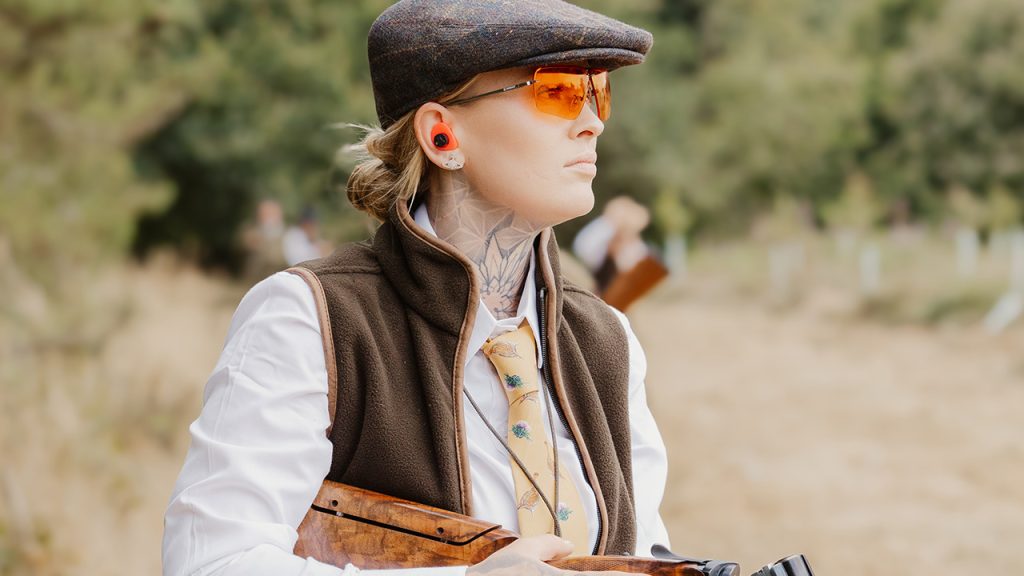Comparison test & review – Howa v Sauer .223 rifles!
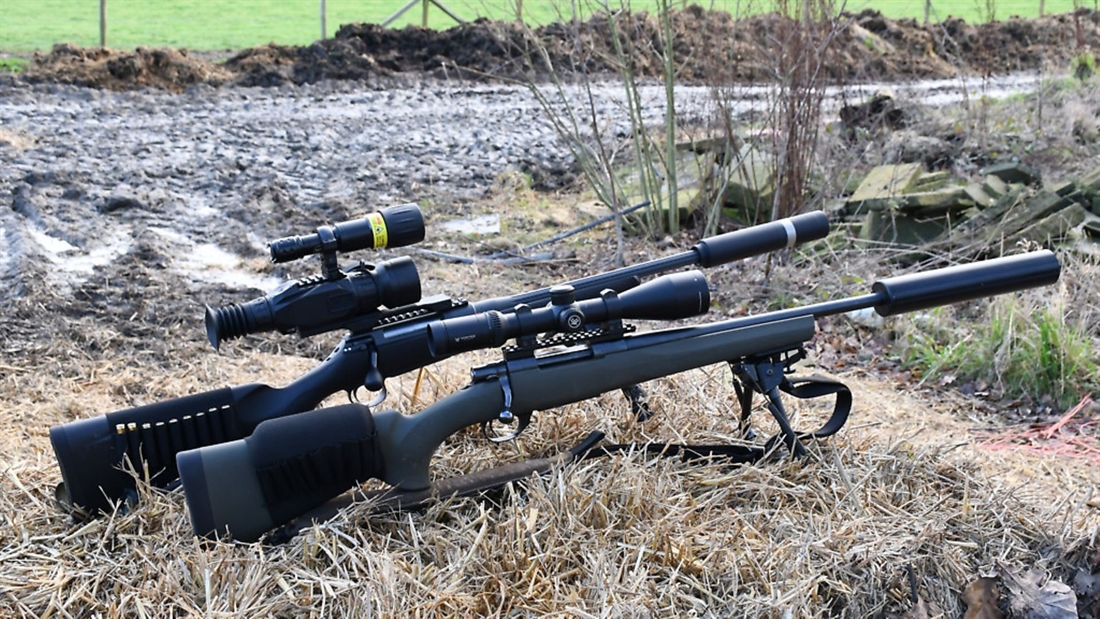
Chris Parkin conducts a detailed comparison of two very different .223s – should you choose a Sauer 223 or a Howa 223? Read on to help decide!
This rifle test is something a little different – a review broken into two comparing and contrasting some of the design highlights and features that can be considered when looking at any competing rifles, hopefully giving some food for thought when listing your own requirements.
It’s probably fair to say that the purchase of something like a .223 for Vermin control and night vision is an early starter for those with multiple rifles covering their hunting needs, but other than calibres, pretty much all of what’s said applies with any cartridge.
The first thing I will say is that I care very little for the most common question of “which is the most accurate” because it’s a great misdirection from the usability of a rifle and these two guns, both used regularly by myself in weekly vermin control, both shoot sub-MOA with ease and little preference for ammunition types within the capability of their barrels’ and twist rates.
Added value
When looking for a good-value tool for a shooting task, Howa is a name that arrives very quickly at the front of any orderly queue. The ability to specify the rifle’s action, barrel and stock within a broad order sheet is the great benefit of Howa, so you aren’t faced with a rifle needing alterations further down the line.
The Sporter barrelled-action in blued finish, short-action in .223 is the most obvious choice for a foxing rifle with modest ammunition costs, which, mated to a Hogue Suregrip stock, puts bullets on target straight from the box. It shows a floated barrel screwed into a two-lug, push-feed action with a 5+1 ammunition capacity from its sprung floorplate magazine.
The barrel is a great compromise at 22” long with a ½” screwcut for moderator and, most helpfully, a 1 in 9” twist rate, should you want to raise the bullet weight a little, shooting 69gr match rounds for extended range.
The Sauer solution
It’s tricky to list the Sauer 100’s features without diverting immediately to the contrasting design of the rifles, which places those same bullets on the same targets at similar speeds while working and handling differently.The Sauer features a slightly shorter 20” barrel, Cerakoted and fluted rather than blued, and while a slower 1 in 10” twist rate makes sure the 55-60gr bullets still stabilise perfectly, it didn’t quite stretch to stabilising the 69s like the Howa had done. Crucially, the Sauer features a three-lug bolt, locking into a breech ring action layout that even I struggled to notice at first.
This is characteristic of evolutionary state-of-the-art manufacturing capabilities and shows the abutments that lock the bolt in position, machined as a separate piece of steel, sandwiched between barrel and receiver as the action is fastened together. It makes little difference to any intrinsic accuracy but highlights the cutting edge of German manufacturing innovation, rather than conventionally broached Howa receiver, which has the action made in one piece with the barrel screwed in.
The locking abutments are part of the receiver and one of the factors that have made actions from Howa, Remington and Tikka so popular to have rebarrelled after a lifetime of use. There is nothing to stop the Sauer receiving a new barrel if needed, but you won’t find the same depth of local riflesmithing experience with this as you will more commons actions. No winner here, just worth bearing in mind.
Sauer are part of the aristocracy of German rifle makers, while Howa are a Japanese industrial manufacturer with involvement in multiple machinery markets, yet they make rifles quite openly in their own 1500 name and those of Wetherby, among others.
On this note, they are using button rifled barrels, a well-established technique that is particularly popular with Savage and others. Sauer cold-hammer-forging their tubes like Mauser, Blaser, Sako and Tikka. Both these rifles are well run in and show reliable shooting, fouling and cleaning manners, but from past experience, using many other rifles from each manufacturer, Howa rifles take a little more shooting in, not so much for accuracy than to make it easier to clean, although .223 is itself an efficient performer with few caveats to concern any shooter with a high round count.
Further action differences are in the flat-bottomed Howa using an integral lug to transfer recoil to the stock where the 100 shows an aluminium insert bonded into the polymer stock that mates with a groove under the cylindrical receiver’s underside with a bolt locking through it.
I will show a preference at this point, because the Sauer action locks hard against this when the screws are tightened whereas the Howa’s front action screw threads into the base of the recoil lug, retaining an air gap between itself and the stock’s inlet. This makes it harder to apply a set torque to the action screw without bending the stock – and this the reason for terms such as ‘bedding pillars’ and ‘glass bedding’ being bandied around so frequently. It’s a whole deeper topic, but I prefer the Sauer design for torque repetition if the pair ever have to be parted.
Two Vs Three
The other big difference in actions is the two- versus three-lug bolts. Before arguments begin, there is no inherent accuracy benefit to either; most benchrest rifles (that are considered to be the ultimate in terms of bullets projected from a rifled barrel) are twin lugged actions, so no arguments please!
Why is this? Well, other than the fact they are evolutions around the original Remington 700 footprint, a two-lug bolt has the longest 90° lift, allowing the greatest mechanical advantage regardless of exact handle length. This disrupts the rifle on its rest bags as little as possible in an environment where operating space is not really a factor.
Conversely, when applied to a sporting rifle, a 45° lift from a four-lug bolt would be best in theory, but the laws of physics clearly dictate that it (all other factors being equal) is going to require the greatest force to accommodate the shorter travel. You don’t see many four-lug bolts for that reason and the ones that are in use feel a bit sluggish to be honest, usually mated to heavier precision rifles.
Three-lug is a superb compromise and although more costly than a two-lug build, gives 60° lift and consequent action speed/bolt ergonomics. I really like this approach as it helps keep your cheek down on the comb without bumping the brim of your hat with your hand operating the handle. A twin-lugger lifts that bit higher so your hand nudges your head. This is made even worse with ridiculous length bolt-handles that are ‘tacticool’.
A single raceway on that shaft (for travel limit and anti-rotation) enables smoother bolt travel (regardless of coatings) than a twin lug with large broached raceways, on virtually any rifle I have ever used. Bolt travel was actually 7mm longer on the Sauer but the shaft was incapable of juddering or jamming but a few of those were coaxed from the Howa when aggravated.
Form & function
Sauer drops to 4+1 capacity with a detachable magazine whereas the Howa has 5+1 on top of a floorplate. I’d actually say the Howa is a little easier and faster to prepare for firing, but it’s horses for courses. The 100 magazines, being the smaller .223 cartridge, loses the fantastic twin-column magazine design attributed to its larger .243/.308 brothers in the Sauer/Mauser family; this one is a single-column mag so needs each round pushing in from the front.
Both rifles feed smoothly without bullet or brass damage, operating with plentiful primary extraction and ejection force yet the Sauer, having two sprung plunger ejectors helps angle the ejected case more cleanly through its smaller ejection port than offered on the Howa.
Flipping back to the latter, a single case emergency shot with a round dropped onto the Howa’s floorplate will feed straight into the chamber! That doesn’t work in the Sauer, so you have to carefully needle one into place manually or swap/reload the magazine. It’s all swings and roundabouts isn’t it!
Both have a three-position safety mounted to the right side of the bolt shroud, and the bolts can be locked when clicked fully rearward. Personally, I like the ergonomic feel of the Sauer more, but it’s easier to catch with a cuff than the Howa’s – so we have another draw.
Trigger wise, I sway back to the 100, a single-stage unit, crisp and adjustable from 1-2kg for a beautifully defined feel with little overtravel on the curved blade. The Howa HACT unit is adjustable and runs through two stages – still accurate and similarly comfortable but a little less crisp on that second stage break.
Both use the exact same long action Remington 700 scope mounting geometry to which I added Picatinny rails for simplicity, plenty of other types are available so take your choice. The 100 is a test bed rifle for me with scope and NV tests so I change regularly and side by side shooting opportunity actually saw it with a Sightmark Wraith mounted. Great hunting scope, but not quite as precise an aiming solution as the Vortex on the Howa. Group size suffered a little, but in fairness, neither can claim a win because groups shot earlier using the Leica Fortis 6 scope were sub-0.5 MOA using Sako ammunition in the Sauer.
Needless to say, on this more recent occasion, I ran 40gr Federal, 50gr Sako and 55gr Hornady ammunition, all shooting similarly profiled ballistic-tipped bullets. The shorter barrels of both rifles lost a few feet per second from the manufacturers’ published data, but both handled beautifully for a night-time foxing rifle in and out of a vehicle, or carried for miles, with those 20-22” tubes. Each showed similar weight balance at the front of the action, but here, the heavier, larger mod on the Howa was a little more nose-heavy than the lighter DPT unit on the Sauer.
Stock wise, the Howa’s Hogue polymer unit shows a rubberised over moulding to the internal harder plastic core. Very tactile with hard rubber stippling on grip and fore-end for plentiful traction. Both floating the barrels but neither has the overbuilt stiffness to cope with excessive lateral pressure if handle brutally.
Sauer’s standard 100 XT stock with ErgoMax ergonomics (shared with others in their range) has a slight down slope to the slender comb’s nose, the Hogue a thicker, parallel comb. Both rifles have been modified with stock packs for ammo storage and one has a cheek raiser slipped underneath as well. Very few rifles are perfect so don’t be afraid to experiment with this on your own guns.
The Sauer is a harder polymer build, similarly stiff in use with good reach to the trigger, and with a slightly longer length of pull than the Howa. Both offer a firm rubber recoil pad to lock nicely into the shoulder, but I prefer the Sauer’s textured finish for better grip.
Recoil in .223 is fairly inconsequential, and both guns are very comfortable to shoot with shot release and precision on target only really affected by the difference in trigger style.
For the record, neither has ever given me point of impact shift from intermittent barrel/fore-end contact issues, but it’s a factor to remember, especially when shooting from a bipod and tracking laterally for a shot. Make sure you lift the bipod feet off the floor and keep all forced back and forth as linear as possible.
So there you go, two rifles of almost identical capability, both wonderfully demonstrating the variety of ways to skin a cat when projecting a 50gr bullet at just over 3,000 feet per second.
Ammunition/Rifle Published velocity/fps Howa, velocity/fps Sauer, velocity/fps
Federal 40gr 3800 3555 3485
Hornady 55gr 3240 2954 2885
Sako 50gr 3490 3292 3152
Group sizes Sub M.O.A. Sub M.O.A.
For Howa, Contact:
01858 880 491
For Sauer, Contact:
01483 917412
Also used
DPT Rimfire Magnum Sound Moderator
www.dpteuro.co.uk 07448 177009
Sightmark Wraith Digital Day Night Vision riflescope
www.scottcountry.co.uk 01556 503587
GBR Picatinny rails
Ammunition used
Federal and Sako ammunition
www.gmk.co.uk 01489 579999
Hornady Ammunition
www.edgarbrothers.com 01625 613177

